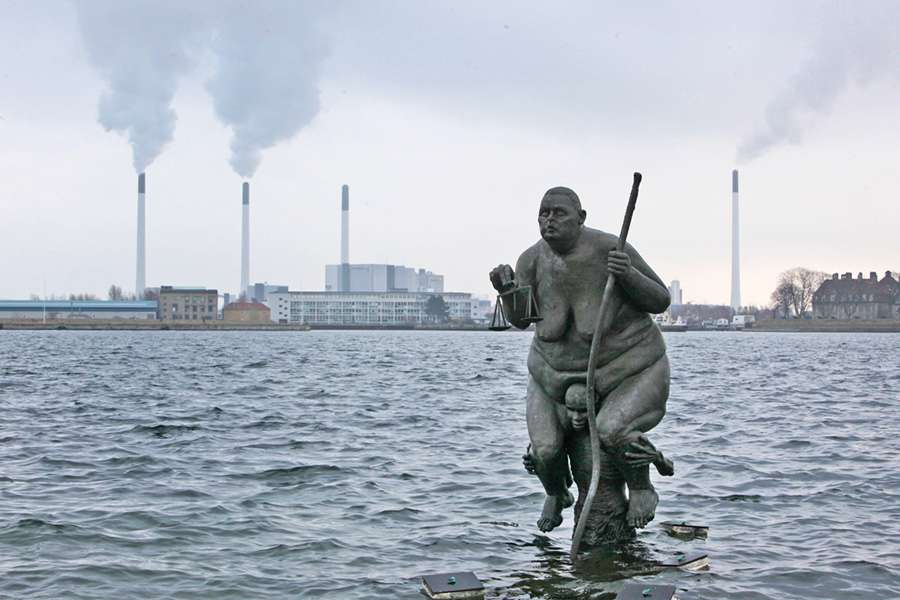Reading a Sculpture
Art interpretation and climate change

Jens Galschiot's Survival of the Fattest, displayed in Copenhagen Harbor during the global climate conference, features an obese Justitia on the shoulders of a frail African. There's an inscription: "I'm sitting on the back of a man. He is sinking under the burden. I would do anything to help him. Except stepping down from his back."
In an explanatory statement, Galschiot declared that "climate changes can only be stopped if the Western World starts massive investments in energy free of CO2 and sustainable production." But you could easily find a different message in the figure, one that encapsulates the developing world's objections to international climate controls. The statue shows a West that industrialized, grew rich and fat, then passed regulations that restrain everyone else. Message to the climate conference: Lay off.
That isn't far from Galschiot's original intent. When the statue was first unveiled, it was a protest against the West's hypocritical trade rules. "Our chanted free trade is full of restrictions in defence of our privileges, while the third world is kept in misery," the artist explained in 2004, adding that "European dairy cattle receive two dollars per day through subsidies while one fifth of the world's population live from one dollar a day." If Galschiot wants to reinterpret his work for the climate debate, that's his right. But one rereading is as good as another.
Jesse Walker (jwalker@reason.com) is managing editor of reason.


Show Comments (64)